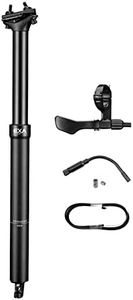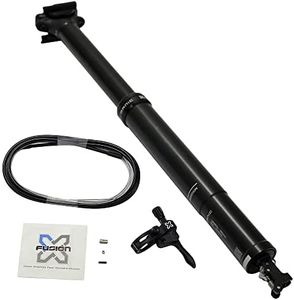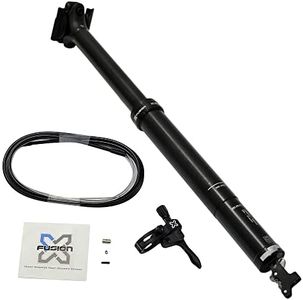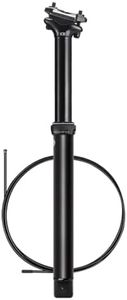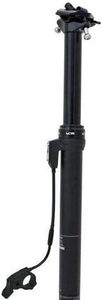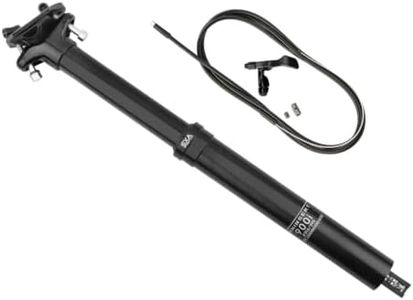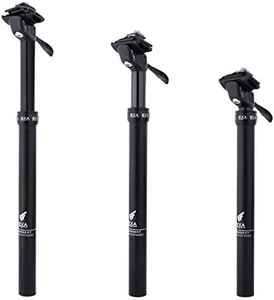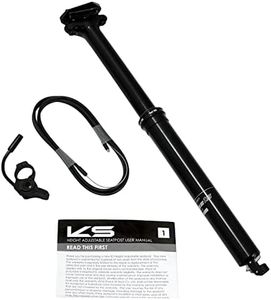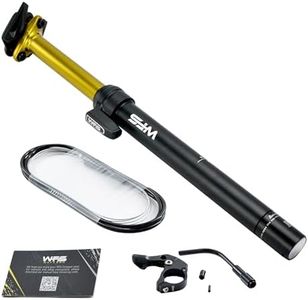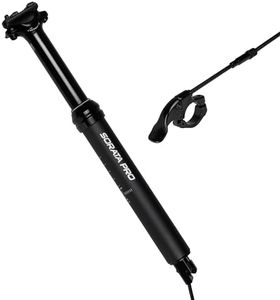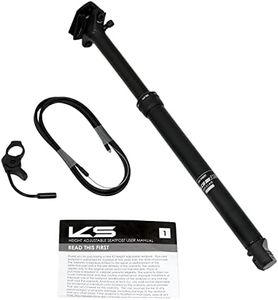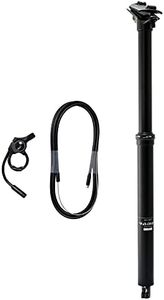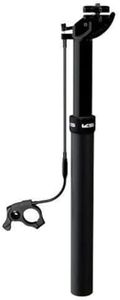We Use CookiesWe use cookies to enhance the security, performance,
functionality and for analytical and promotional activities. By continuing to browse this site you
are agreeing to our privacy policy
10 Best Dropper Seatpost
From leading brands and best sellers available on the web.Buying Guide for the Best Dropper Seatpost
A dropper seatpost is a handy upgrade for your bike, letting you change your saddle height on the fly with a lever—super useful for riding up hills, bombing down trails, or navigating tricky terrain. Picking the right one isn't just about grabbing the first model you see; you'll need to think about your bike's compatibility, your riding style, and your own comfort and needs. By understanding a few key features, you can make a choice that really improves your ride.Drop TravelDrop travel refers to how far the seatpost can move up and down. A bigger number means the seat can get lower for descents and higher for climbing. Common travel ranges are short (about 80-120mm), medium (125-150mm), and long (160mm and above). Riders who do more technical or steep descents may want more travel, while cross-country or less aggressive riders might prefer a shorter travel. The right amount of drop depends on your leg length and riding style—aim for enough movement so you can get the saddle fully out of the way when you need it, but not so much that you struggle to reach the pedals when it’s up.
Seatpost DiameterThe seatpost diameter is the thickness of the tube that fits into your bike’s frame. Common diameters are 27.2mm, 30.9mm, and 31.6mm, with some bikes using other sizes. It's important because only the correct diameter will fit your bike frame securely. Always check your bike's seat tube size before buying, and if in doubt, measure the inner diameter of your bike's seat tube.
Actuation (Remote or Lever Placement)Actuation describes how you operate the dropper: usually with a remote lever on the handlebar (most popular) or by a lever under the saddle. Handlebar remotes let you control the seatpost without taking your hands off the bars, making them safer and more convenient for mountain biking. Under-seat levers might be fine for more casual riding. Think about how and where you'll ride—if you need quick adjustments on tricky trails, a handlebar remote is ideal.
Routing (Internal or External Cable)Routing refers to how the control cable runs from the lever to the dropper post. Internal routing (also called stealth) hides the cable inside the bike frame, leading to a clean look and protecting your cable from dirt. External routing leaves the cable outside the frame, which can be easier to install but might be less tidy. Your choice is usually dictated by your bike’s frame design; check if your bike has ports for internal routing before deciding.
Post Length and Insertion DepthThe overall length of the dropper post, and how much of it actually fits inside your frame, is important for both comfort and safety. Some frames only allow a short section to be inserted, limiting your dropper options. Measure how deep your seat tube goes and check the dropper post specs to ensure it will fit. Riders with smaller frames or those who want a lot of drop should pay extra attention here.
WeightWeight is simply how heavy the seatpost is. Lighter posts are usually more expensive but can be beneficial for racing or if you’re carrying your bike a lot. For most casual or aggressive riders, a small weight difference won’t affect performance much, so prioritize ease of use and compatibility over saving a few grams.
Maintenance and ReliabilityDropper seatposts are moving parts and need to be reliable in muddy, wet, and rough conditions. Some designs are more robust or easier to service at home. If you ride often in harsh conditions or want a post that’s easy to fix, look for models known for easy maintenance. Think about your willingness or ability to do maintenance yourself, as more complex posts may require shop service.
